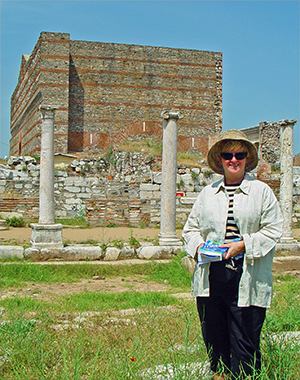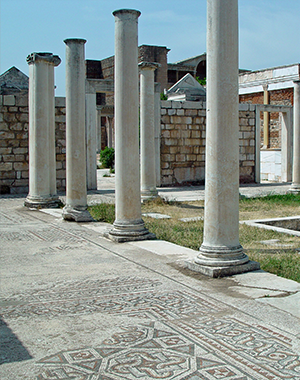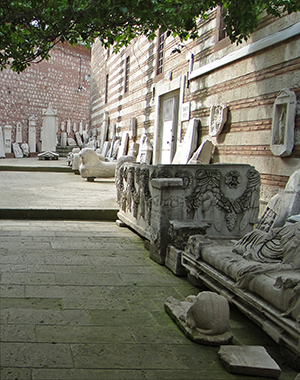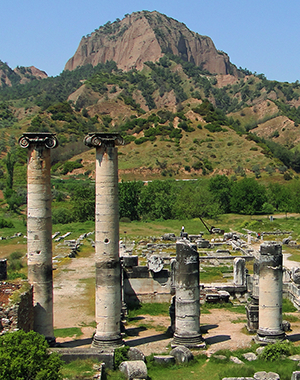Videos—Revelation: Sardis

-
Sardis: Main Street
Sardis is ancient. Settlement goes back nearly 3,000 years. Her location was strategic. The citadel atop the nearly impregnable acropolis controlled the main passage from the Aegean coast into central Anatolia. Fields were fertile, and gold deposits created extraordinary wealth. Of the Lydian kings that ruled this region in the 7th and 6th centuries B.C., none was more famous or wealthy than Croesus. Sardis remained important under the Persians and the Greeks, and even through the Roman era as far as into the 7th century A.D. The most famous remains are the Roman bath, known as the Marble Hall, and the Jewish synagogue, the largest diaspora synagogue ever found.

-
Sardis: Synagogue
The Sardis synagogue is the largest diaspora synagogue ever found. Artifacts related to the synagogue indicate thorough cultural accommodation and assimilation of the Jewish community in Sardis with the Roman world. The synagogue building architecturally was integral to the entire palaestra and bathhouse complex, being one entire side of the palaestra and physically was connected to the bathhouse itself.

-
Sardis: Marble Hall
The magnificent structure of the Roman bathhouse at Sardis, or Marble Hall, suggests the grandeur and impressive beauty of the Roman world. Inscriptions preserve Roman imperial ideology. The reconstructed façade of the Marble Hall is one of the most recognizable sights of ancient Turkey.

-
Sardis: Manisa Archeological Museum
Artifacts from the excavations at Sardis are housed in the archeological museum at Manisa, which is about 45 miles from Sardis. The museum is closed (seemingly permanently, since this situation has been true now for many years). However, even the artifacts in the museum courtyard yield significant finds. One is an imperial priest inscription from the second century A.D. that illustrates imperial cult activity in Asia Minor not long after John wrote the book of Revelation. The other is the original pair of eagle relief bases that held the large table at the front of the Jewish synagogue. The eagles originally were part of a Roman construction and were repurposed into part of the furniture in the Jewish synagogue. In this way, Roman and Jewish worlds were fused together into the synagogue furniture.

-
Sardis: Temple of Artemis
The temple of Artemis sits atop the Sardis acropolis and indicates the broad influence of Artemis worship throughout Asia Minor, not just in Ephesus, where the great Artemesian was one of the seven wonders of the ancient world. The impregnable Sardis acropolis twice was taken by surprise in daring nighttime infiltration when the Sardis inhabitants and guards were asleep and thought all was secure. This local history probably is behind Christ’s words to the church at Sardis.

Videos > Videos-1MJ Videos-2MJ Videos-3MJ Videos-4JR Videos-Rev